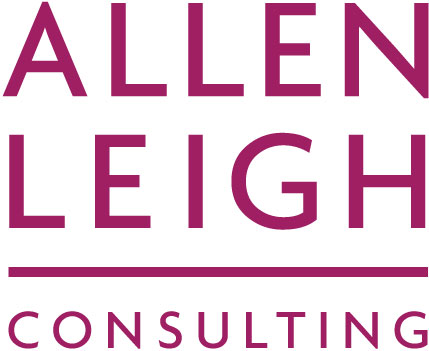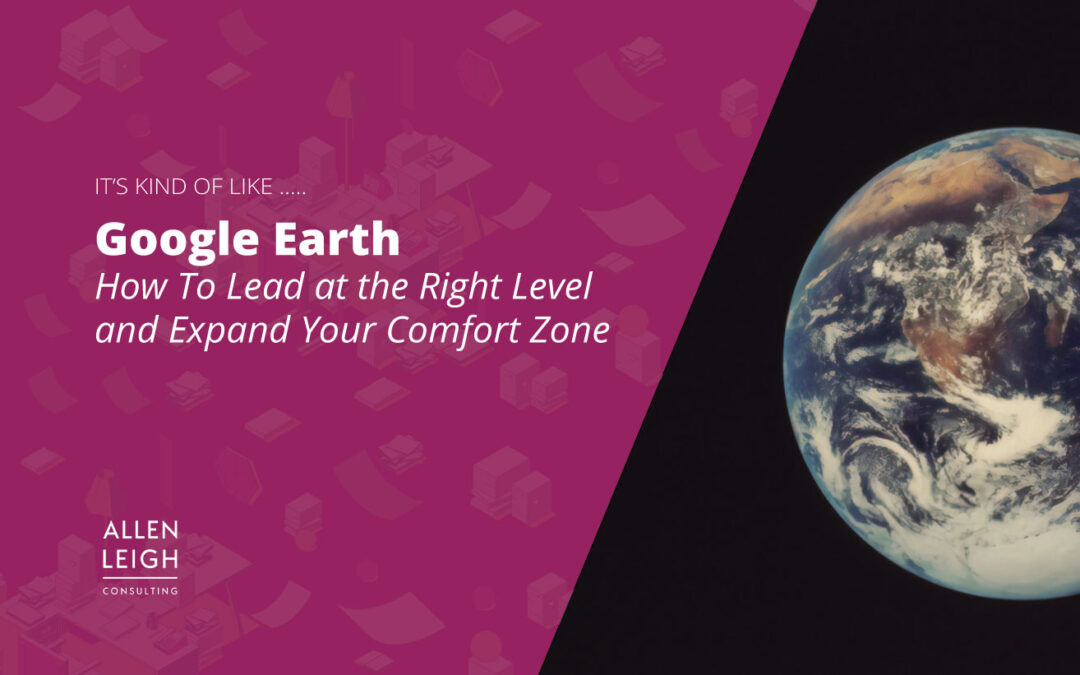Some leaders are high-level thinkers. They speak in terms of vision and strategy, and love to use big picture ideas to inspire their team. Other leaders are more technically-oriented, and prefer to roll up their sleeves and get into the weeds, leading by example to win over their team.
The best leaders I have worked with are able to zoom in when they need to and zoom out when they have to. I liken this leadership style to Google Earth.
Have you ever used Google Earth?
If so, you have likely clicked on the little yellow person that brings you to a real-life picture of the address you have searched. As a CEO, founder, or leader-manager, it is critical to access this view once in a while to ensure things are being done correctly and as expected in all business areas. In general, there are three views that leaders should operate using: Street View (the context), City View (the overview), and Earth View (the big picture).
Zooming in and out is key, but as many leaders know, this takes time and energy—two things of which you are likely running short. The first step in taking back your energy and focus is to identify which view is your automatic setting and determine how much dexterity is needed to reach the other levels.
Street View – The Context
There are times when you will need the context and details of a situation, and it’s important to zoom in closely to see what the actual houses and streets look like in your world. This is your personal tour of the business or team, where you can see and experience it for yourself. Some of you are contextual thinkers and love the hands-on approach. You are likely technical or manufacturing experts (think: engineers) and find it hard to let go of not knowing it all. Others have left the Context zone years ago and never want to go back. However, neither position is advantageous all the time.
If you stay in Street View too long, you will miss opportunities and duplicate tasks done by other people or departments. Becoming siloed and overly focused on the here and now will also create confusion in your business. However, if you never zoom in, you don’t know what is really going on at the operational level. The key is to be in the Context zone every once in a while to see if things have changed. Just like Google Earth, your business’ Street View only gets updated occasionally, so it isn’t necessary to be focused-in all the time. Examining the context too frequently is a waste of time, but not at all could be catastrophic.
City View – The Overview
City View is the position on Google Earth where you can see a large portion of the city with just enough detail to identify prominent landmarks, roads, and highways. This is the ideal position for mid-level leaders, local enough to understand the office’s current vibe but still able to pay attention to market shifts happening around them. They can zoom in when they need to and zoom back out accordingly. The challenge here is that you may feel like you are missing out on both the big picture and the local street party, and you may feel stuck in the middle (think: middle management). This FOMO can create “zoom happy” middle-managers who repeatedly focus in and out rather than remaining steady and confident in their City View.
Earth View – The Big Picture
If you zoom out far enough, you will see a big round picture of the entire earth! This is the pie-in-the-sky kind of thinking that makes organizations thrive long-term and gets people excited. However, this lens also oversimplifies things and makes them appear more manageable than they may be in reality. Want to go from Toronto to Hong Kong? Not a problem; it is just a few inches away! Staying in this view too long can lead to out-of-touch leadership, but if you never access the Big Picture, you and your business may never really know where you are going.
Key Takeaways
- Effective leadership requires the ability to zoom in and zoom out as needed
- We all have a natural comfort zone when it comes to our views, which comes with natural strengths and weaknesses
- Thinking about your leadership style, identify your natural zoom level on a scale of 1-10. 10 is Street View, 1 is Earth View
- Having identified your natural comfort zone, begin to flex by two or more points up and down this week
- Continue to build out your flexibility, and aim to land somewhere in the middle
- Apply this tactic to your communication style. If your team is naturally at level 1, work to communicate at level 2. Communicating at two or more levels higher than your team is destined to cause frustration
- Begin to think about how constant zooming could be impacting your energy and focus
(See: Mountain Climbing Leadership, & Shaken Snow Globe Syndrome)






